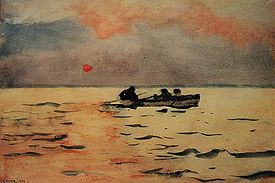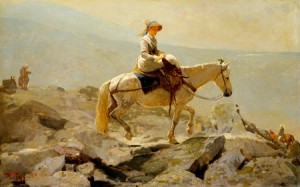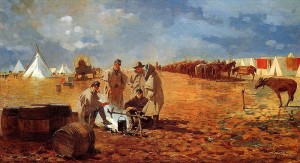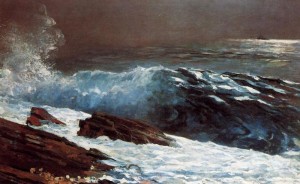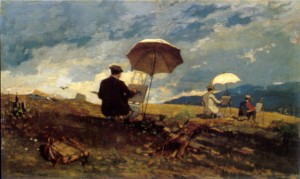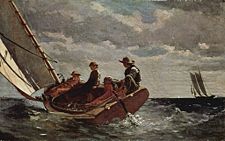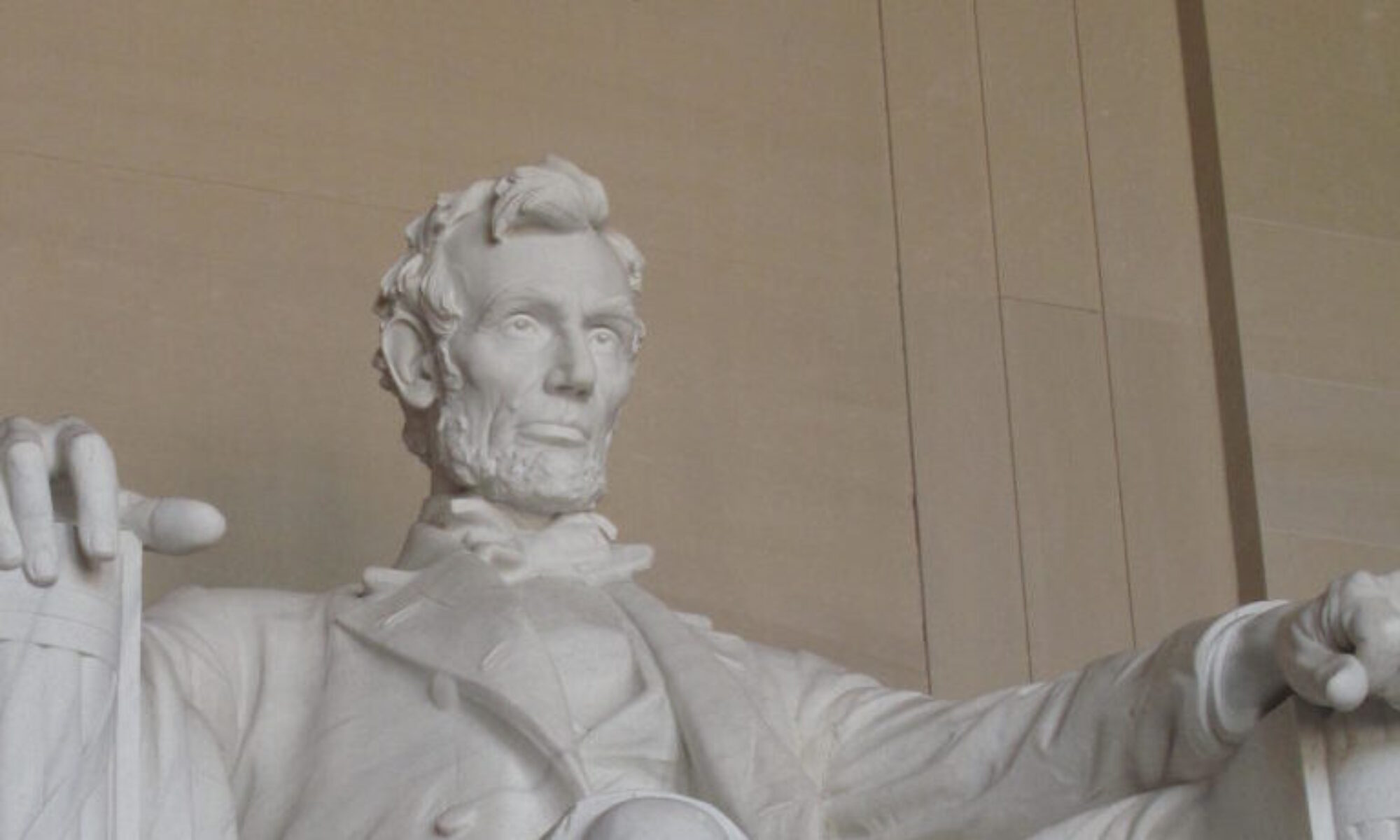The Portland Maine Museum of Art is hosting a large retrospective on the artwork of American artist Winslow Homer on the occasion of the 100th anniversary of his death. The exposition, “Winslow Homer and the Poetics of Place”, is highlighted in the New York Sun and focuses on Homer’s unique American gifts for translating the quiet but heroic dignity of regular citizens in their daily lives. Homer’s realistic technique, storied canvas settings, and understanding of water and man’s relation to it makes the consideration of a road trip to Maine a tempting prospect.
American art in the the first half of the 19th century lived with an inferiority complex in relation to its European cousins’ art tradition. The acknowledged talent was in protrait and generally a copied European style epitomized by the work of portraitists such as Gilbert Stuart. As the internal continent, however, was discovered by the new American nation, an increasing self awareness of the uniquely American panorama and story began to take hold. Artists such as Thomas Cole, Frederich Church, and Sanford Gifford romanticized the pristine and enormous scope of the American landscape that began to record the noble American countryside in a fashion as eternal as any European equivalent. This so called Hudson School began to create an American theme that was popular and commercial, and art progressively became a means of a proud American expression of nationhood.
Winslow Homer was something entirely different. His initial training was as an illustrator for the large American magazines such as Harper’s Weekly, where he perfected the craft of telling a complex story through single illustration. He learned of the importance of people to the visual story and became a mature artist and infinitely more serious projector of American society with his personal experience with the Civil War. He brought home to ten of thousands who read the weeklies the lives of soldiers and civilians in the epic conflict in such a way all recognized their own brethren in each compelling illustration. the seriousness of the conflict elevated Homer’s technique and more complex oil paintings became the norm. As a means of eventually separating himself from the tragedies of the battle conflict, he returned after the war to more intimate and pastoral scenes of women and children, that may have elevated the recent pain he felt, but had an underlying solemnity that defied the subject matter. The influence of French impressionism through Manet converted his oil technique to a style of more substantial tension and color in his paintings, epitomized by the ocean paintings, which captured man’s elemental struggle and the awesome power of the sea in an unforgettable fashion. Though the romance of the American West continued to be a theme in the successful paintings of such painters as Bierstadt and Moran, Homer never let the monumental story on the canvas overwhelm man’s position in it, and forever make him in my mind simply the more interesting American painter in comparison.
Winslow Homer’s paintings lie in every great American museum and he takes now a back seat to nobody in popularity. In a genra as silent as painting, his works virtually shout out the internal thoughts and emotions of the participants and codify their American roots in a way that elevates the American story for all of us – with quiet, quiet pride. Happy Anniversary, Winslow Homer.
